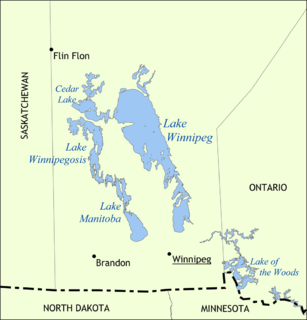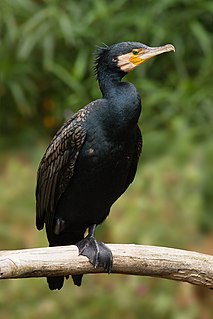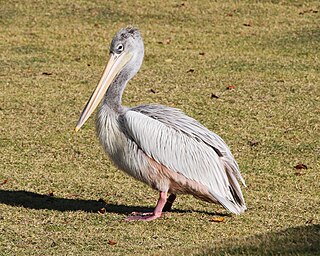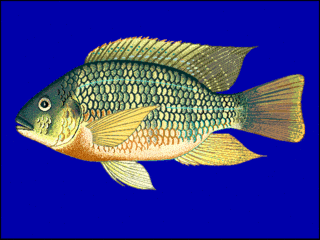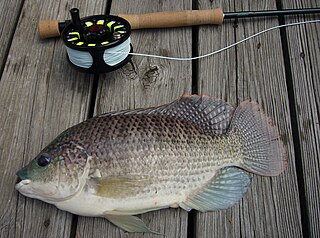| Lake Tshangalele | |
|---|---|
| Coordinates | 10°52′50″S26°59′33″E / 10.880556°S 26.9925°E Coordinates: 10°52′50″S26°59′33″E / 10.880556°S 26.9925°E |
| Lake type | artificial lake |
| Primary inflows | Lufira River |
| Primary outflows | Lufira River |
| Basin countries | Democratic Republic of Congo |
| Max. length | 25 km (16 mi) |
| Max. width | 24 km (15 mi) |
| Surface area | 362.5 km2 (140.0 sq mi) |
| Average depth | 2.6 m (8.5 ft) |
| Max. depth | 14 m (46 ft) |
| Water volume | 1.063 km3 (0.255 cu mi) |
| Surface elevation | 1,105.75 m (3,627.8 ft) |
Lake Tshangalele, also known as Lake Lufira or Mwadingusha Reservoir, is an artificial lake in the south-east of the Democratic Republic of Congo. It is located about 20 km east of the city of Likasi in the old province of Katanga. It lies at about 1,100 m above sea-level in a large depression surrounded by low mountains. It was created by a dam built on the Lufira River near Mwadingusha in 1926 to provide hydro-electric power. The area of open water is about 362.5 km2. During the wettest months of February and March, the area flooded reaches a maximum of 440 km2. The lake is shallow with a mean depth of only 2.6 m.
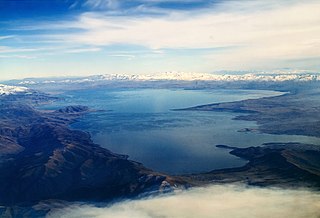
A lake is an area filled with water, localized in a basin, that is surrounded by land, apart from any river or other outlet that serves to feed or drain the lake. Lakes lie on land and are not part of the ocean, and therefore are distinct from lagoons, and are also larger and deeper than ponds, though there are no official or scientific definitions. Lakes can be contrasted with rivers or streams, which are usually flowing. Most lakes are fed and drained by rivers and streams.

Likasi is a city in Haut-Katanga Province, in the south-east of the Democratic Republic of Congo.

Katanga was one of the eleven provinces of the Democratic Republic of the Congo between 1966 and 2015, when it was split into the Tanganyika, Haut-Lomami, Lualaba and Haut-Katanga provinces. Between 1971 and 1997, its official name was Shaba Province.
The lake holds a variety of fish including longfin tilapia (Oreochromis macrochir), redbelly tilapia (Tilapia zillii), thinface cichlid (Serranochromis angusticeps) and North African catfish (Clarias gariepinus). It supports an important commercial fishery with the tilapias the main species caught. Surrounding the lake, there are extensive swamps where Typha and Cyperus grow. The region is rich in birdlife such as the Lake Lufira weaver (Ploceus ruweti) which is endemic to the area. The lake was declared a Biosphere Reserve in 1982 and is classed as an Important Bird Area by BirdLife International.

Fish are gill-bearing aquatic craniate animals that lack limbs with digits. They form a sister group to the tunicates, together forming the olfactores. Included in this definition are the living hagfish, lampreys, and cartilaginous and bony fish as well as various extinct related groups. Tetrapods emerged within lobe-finned fishes, so cladistically they are fish as well. However, traditionally fish are rendered paraphyletic by excluding the tetrapods. Because in this manner the term "fish" is defined negatively as a paraphyletic group, it is not considered a formal taxonomic grouping in systematic biology, unless it is used in the cladistic sense, including tetrapods. The traditional term pisces is considered a typological, but not a phylogenetic classification.

The redbelly tilapia is a species of fish in the cichlid family. It is found widely in Africa and the Middle East, but has also been introduced outside its native range. It is an important food fish and sometimes seen in the aquarium trade. Its natural habitats are marginal vegetation and seasonal floodplain streams, lakes, and ponds. It was formerly included in the genus Tilapia as Tilapia zillii.

Tilapia is the common name for nearly a hundred species of cichlid fish from the tilapiine cichlid tribe. Tilapia are mainly freshwater fish inhabiting shallow streams, ponds, rivers, and lakes, and less commonly found living in brackish water. Historically, they have been of major importance in artisanal fishing in Africa, and they are of increasing importance in aquaculture and aquaponics. Tilapia can become a problematic invasive species in new warm-water habitats such as Australia, whether deliberately or accidentally introduced, but generally not in temperate climates due to their inability to survive in cold water.

